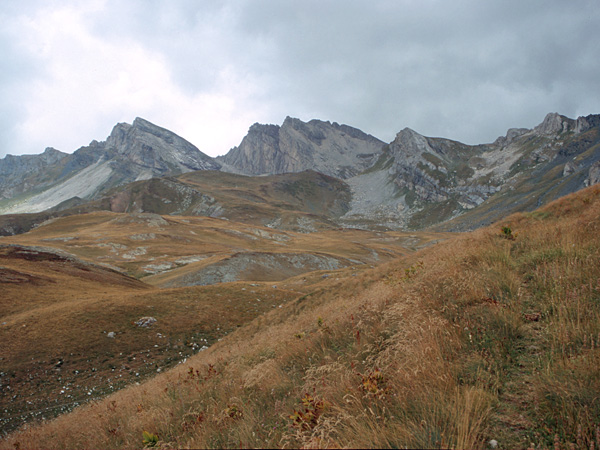Phylogeography of Campanula orbelica, or how the biodiversity of the Balkan Peninsula was shaped
The Balkan Peninsula is one of Europe's most biologically diverse regions (so-called biodiversity hotspots). There are at least two reasons for this. Firstly, due to its location, this area was one of the main southern Pleistocene refugia, providing European biota with a chance to survive periods of glaciation. Secondly, the topographic and environmental diversity of the Balkan Peninsula, resulting from its mountainous character (mountains cover ca. 70% of the area), favoured speciation and persistence of a large number of species, including those comprising the mountain flora, in a relatively small area.
Phylogenetic and phylogeographic studies, which have developed significantly in recent years, have provided new data that are important for understanding the evolution and biogeography of the Balkan mountain flora. However, most of the articles published on this topic focus on species inhabiting the limestone massifs of the Dinaric Alps located in the northwest, along the Adriatic coast.
Recently, the journal Alpine Botany published a paper on Campanula orbelica, a species typical of calcium-carbonate-poor alpine grasslands. The species is endemic to the northern part of the Balkan Peninsula; it occurs both in the western mountain ranges of the area (in the vicinity of the aforementioned Dinaric Alps) and in the eastern ranges. The authors – Michał Ronikier from our Institute, together with colleagues from Serbia, North Macedonia and Switzerland – investigated the genetic structure of populations from the entire range of C. orbelica and carried out modelling of the contemporary and historical (after the period of the last glaciation maximum, about 20,000 years ago) climatic niches occupied by the species and its phylogeographic lineages.
The research led to the discovery of three geographically consistent, allopatric genetic groups. One is associated with populations from the Pirin Mountains in the eastern part of the range (Bulgaria), the second includes populations from the neighbouring Rila Mountains and other eastern Balkan massifs (Rhodopes, Stara Planina, Vitoša), and the third includes the most geographically isolated part of the species range in the Šar Planina and Korab in the west (border of North Macedonia, Albania and Kosovo). This arrangement confirms the existence of several long-term refugia and associated isolated microevolutionary centres in the mountains of the Balkan Peninsula. Analyzes have shown that the species' probable ancestral area is associated with the mountain massifs of the eastern part of the Peninsula. Interestingly, the observed genetic divergence was only partially correlated with geographical isolation, dispersion barriers, or differences in climatic niches. The most surprising result was the finding of the greatest genetic distinctiveness between the C. orbelica populations from the directly adjacent Pirin and Rila massifs. Its cause could have been microevolutionary processes related to the diversity of the geological substrate (however, this hypothesis should be confirmed by further, detailed research).
The results obtained by the authors (which are not always obvious) demonstrate the importance of phylogeographic research for an in-depth understanding of the biodiversity patterns of the Balkan Peninsula and the factors shaping them.
The original article:
Ronikier M., Kuzmanović N., Lakušić D., Stevanoski I., Nikolov Z., Zimmermann N.E. 2023. High-mountain phylogeography in the Balkan Peninsula: isolation pattern in a species of alpine siliceous grasslands and its possible background. Alpine Botany 133: 101–115. DOI

Campanula orbelica on the slopes of the Vihren.
Photo: Michał Ronikier

A flowering specimen of Campanula orbelica in the Rila Mountains.
Photo: Michał Ronikier

Valley of the Seven Lakes (Sedemte Ezera) in the Rila Mountains (Bulgaria).
Photo: Michał Ronikier

Korab Mountains on the border between North Macedonia and Albania – the western edge of the range of Campanula orbelica.
Photo: Michał Ronikier

Vihren in the Pirin massif (Bulgaria), where the most genetically distinct populations of Campanula orbelica occur.
Photo: Michał Ronikier






